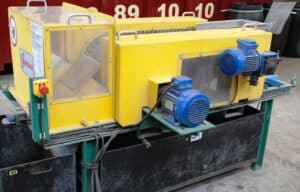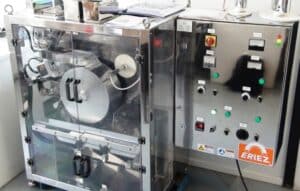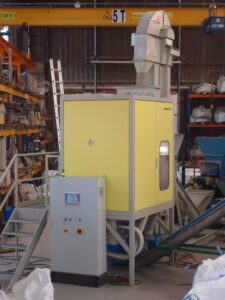Contact us
Electrostatic Separation
The techniques of electrostatic separation exploit the differences in the electrical conductivity of the particles after being charged and the appearance of positive or negative charges on their surfaces.
The charging method varies depending on the equipment and the application. A system of attraction or repulsion proportional to this charge enables their separation. It is imperative that the materials are absolutely dry.
Eddy currents are produced by an alternating magnetic field by a polarity device (a wheel with magnets with alternate polarities) rotating within a conveyor drum. They cause a repulsion on the part of the elements which conduct electricity (particularly aluminium, copper and magnesium).
Standard electrostatic separators subject the particles to an ion bombardment generated by a very high-voltage electrode (15 to 30 kV). These charged particles are in contact with a grounded drum and are discharged at speeds which are different depending on their conductivity, thereby enabling their separation.
Triboelectric separators use a charging method based on the particles intensively rubbing against each other, with some being charged positively and the others negatively. This technique thereby allows a preferential sorting of the binary mixtures of the particles. It is quasi-exclusively dedicated to the sorting of plastics (for example for the mixtures HDPE/PP, PET/PVC, PVC/rubber, PP/PS, ABS/PMMA, HIPS/ABX, PVC/PE and many others).
| Equipments | Level | Input | Capacity | |
|---|---|---|---|---|
| Eddy current separator |

|
Pilot | 8 - 50 mm | 50 to 250 kg/h |
| Electrostatic separator |

|
Laboratory | 100 µm - 10 mm | 50 kg/h |
| Triboelectric separator |
 |
Pilot | 2 - 10 mm | 500 kg/h to 1 t/h |
Our expertise
In mineral processing
All
Our expertises